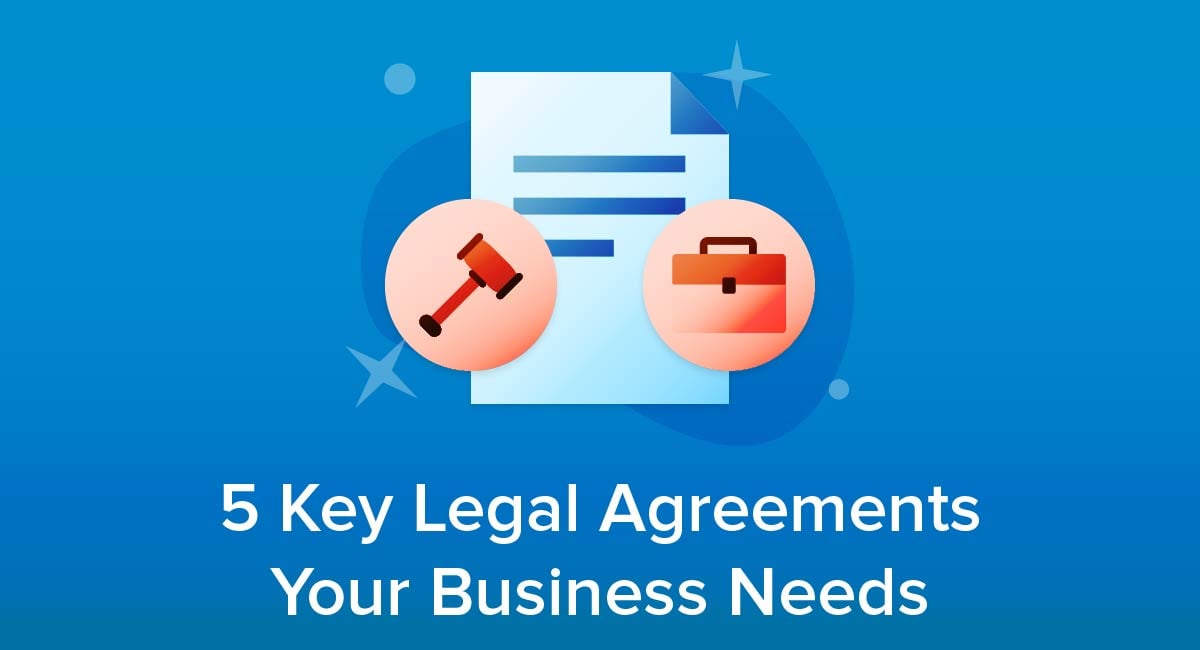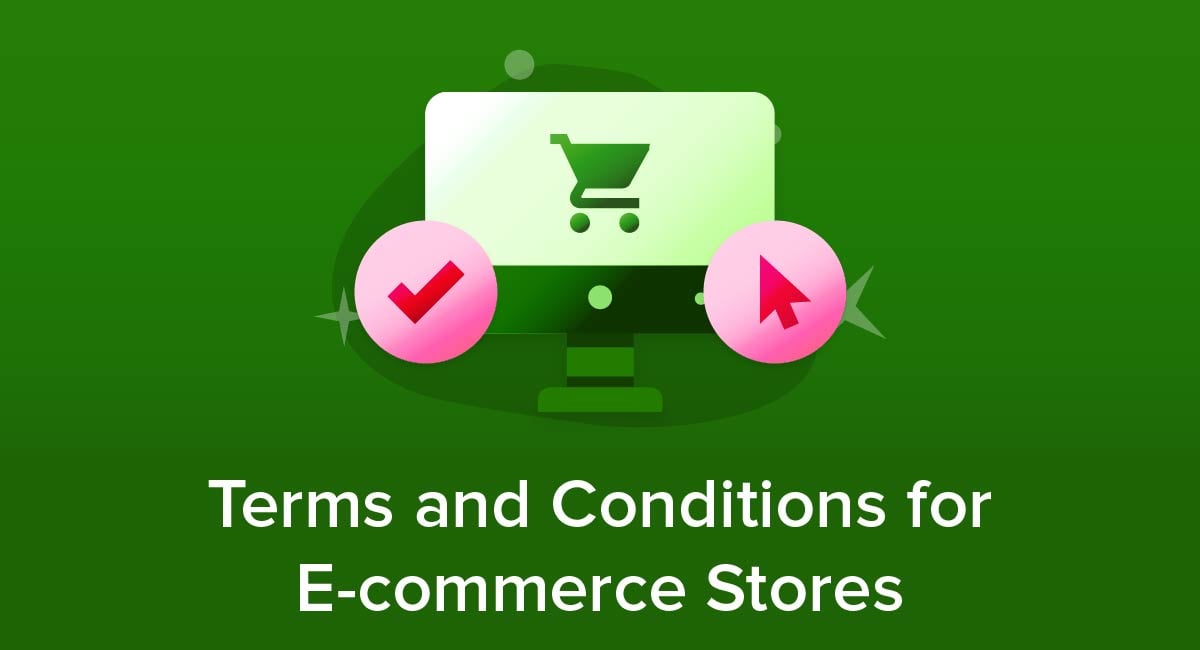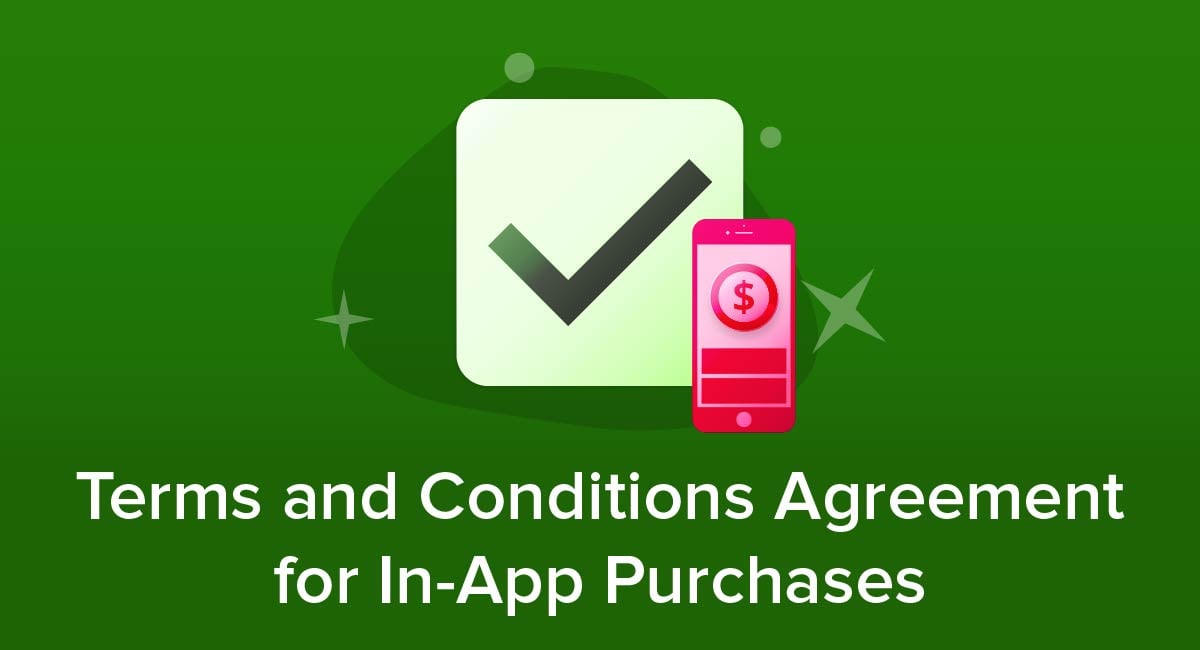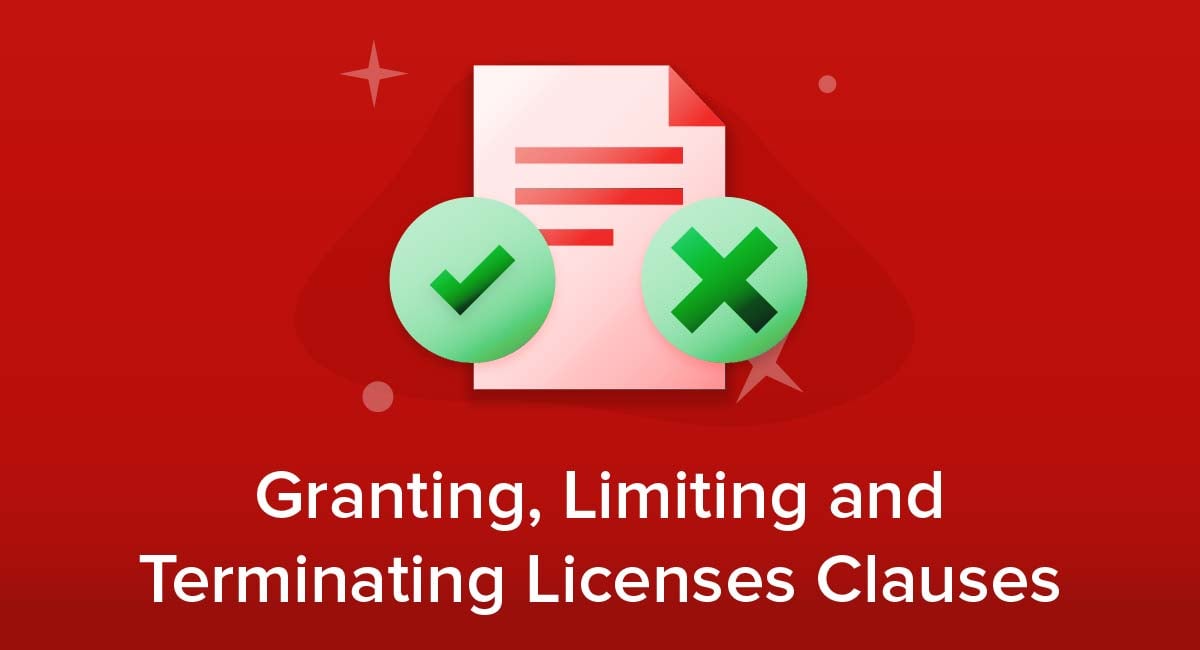
If you offer any form of software, including web tools and apps, you will usually license it rather than sell it outright. You can use your Terms agreements to set out the terms of this license. This will reduce the risk of users violating your license either intentionally or inadvertently.
Here's what you need to know about drafting a solid clause for your Terms and Conditions agreement or End User License Agreement that will grant, limit and allow you to terminate licenses.
Use FreePrivacyPolicy.com to generate the necessary legal agreements for your website/app:
- Free Privacy Policy Generator
- Free Terms and Conditions Generator
- Free Cookies Policy Generator
- Free Disclaimer Generator
- Free EULA Generator
- Free Return & Refund Policy Generator
You check our Free Cookie Consent to start making your business legally compliant with the Cookies Directive in the EU.
- 1. What is a License and What Does it Cover?
- 2. Where Do Granting, Limiting and Terminating Licenses Clauses Appear?
- 3. What Do Granting, Limiting and Terminating Licenses Clauses Aim to Do?
- 4. Information to Include in Granting, Limiting and Terminating Licenses Clauses
- 4.1. Licensor Details
- 4.2. What is Covered By the License
- 4.3. What the Licensee Pays
- 4.4. Intellectual Property
- 4.5. Liability and Warranty Disclaimers
- 4.6. Limits on Use
- 4.7. Termination
- 5. Summary
What is a License and What Does it Cover?
In this context, a license is where you are giving people permission to use something, rather than letting them buy it outright. The fact you are using a license does not depend on whether you are offering something free of charge, using a subscription model, or charging a one-off fee.
A license generally covers software, digital files or digital tools. This could include:
- A desktop computer application
- A mobile app
- A website, particularly with online tools or members-only functions
- Streaming video, audio and other content
This form of license normally only covers digital material. For example, publishers and distributors may impose license conditions when they sell electronic books, retaining the right to alter or even remotely delete the file later on (usually with a refund). However, in most jurisdictions, the same book in physical copy is sold outright rather than licensed.
Where Do Granting, Limiting and Terminating Licenses Clauses Appear?

This type of licensing clause generally appears in two main places.
The first is within End User License Agreements (EULA), which sometimes have other names such as a Software License Agreement (SLA). This is essentially a contract between the producers of the software and the person who uses it, known respectively in this context as the licensor and licensee. These are more common when the licensee installs software on a device such as a computer.
The second is within Terms and Conditions agreements (T&C), also called Terms of Service or Terms of Use. These cover the relationship between somebody making a service available and the person using that service. These are more common when the user accesses the service without having to install software, for example through a website.
In practice, EULAs and T&Cs cover broadly similar material. Either could be designed either to stand alone or work alongside other agreements and documentation.
What Do Granting, Limiting and Terminating Licenses Clauses Aim to Do?
Either on their own or alongside other documents, these license clauses work to inform users and generally cover three main points:
- What the licensor is providing
- What (if anything) the licensee pays to use the product or service
- Rules that both sides agree to follow, covering the way the service is provided and used
Although we've referred to "granting, limiting and terminating license clauses," these don't necessarily have to be three distinct clauses. The best set-up depends on exactly what is in the agreement and how much detail you have.
At one extreme, a single clause could cover a very simple license. At the other, you may need a more detailed document with multiple clauses addressing a wide range of points.
A good guideline is to keep the overall licensing terms as brief as possible to make it easily readable and understandable, while making sure you cover all the key points.
You should also make it as easy as possible for readers to find an answer to any specific questions they have about the license.
Information to Include in Granting, Limiting and Terminating Licenses Clauses

Let's take a look at some of the key points of information you should include in this clause or these clauses.
Licensor Details
As the licensor, you should clearly state your organization's identity and contact details.
This avoids any confusion in cases where third parties have distributed or promoted the licensed product or service. It also establishes a clear point of contact to resolve any queries. This reduces the risk of a disgruntled licensee pursuing a legal resolution before giving you a chance to put something right.
What is Covered By the License
You need to address exactly what the license covers. Some possible variables include:
- Specific software packages and features if you offer a range of packages or options
- The number of people allowed to use the software or tools under the license
- The countries in which the licensee can use the software or tools
- Whether the licensee can use the software or tools for commercial rather than personal purposes
- Whether the licensed use has a fixed time limit, works on a subscription basis, or runs indefinitely
- Whether the user can sub-license the software or tool, meaning they give permission to use it to a third party while retaining permission themselves
- Whether the user can transfer the license to a third party, who then has permission to use the software or tool instead of the user
Apple covers several of these points in its "Scope of License" clause:
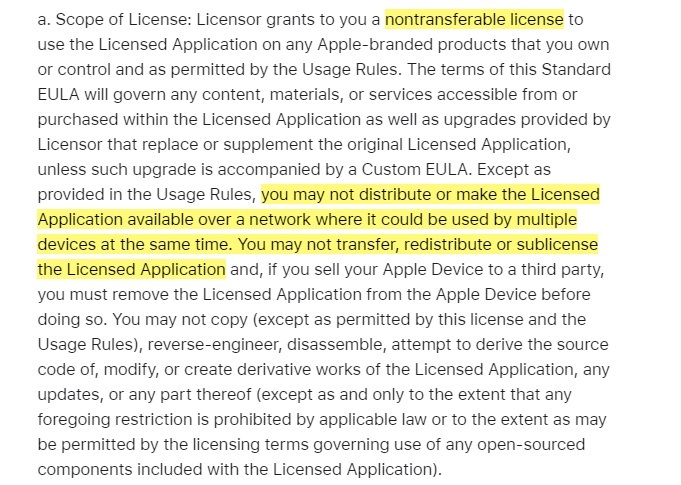
What the Licensee Pays
If you charge for using the licensed product or service, you need to detail the price. This could be part of the license clauses or in accompanying documents such as a sale agreement.
You need to cover:
- The price, including the currency
- When payment is due
-
Whether the payment will (or may) change when the license comes up for renewal or future subscription payments come due. This could include increases:
- In line with inflation
- To reflect currency exchange rate changes
- At your discretion
Cisco covers both the use of renewal fees and the implications of a fee change:
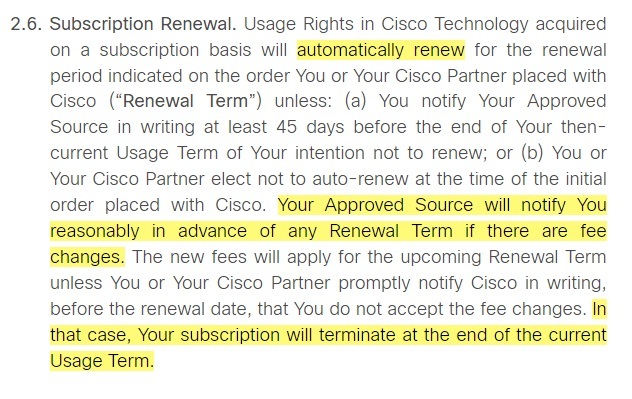
Intellectual Property
When licensing software or tools, you need to address your intellectual property as well as that of your users.
Key points to address could include the following:
- Making clear that your granting the license does not diminish your intellectual property rights such as copyright on the software code or a trademark on an application's name.
- Banning or limiting reverse engineering, either completely or for specific purposes such as unlawful reproduction of the software functions.
- Covering who owns intellectual property rights in anything the user creates using your software or tools.
HP makes clear it retains its intellectual property rights:

Liability and Warranty Disclaimers
When you license software to a user, you face two potential legal consequences:
- You could be held liable for damages caused by the software.
- The user could rely on you warranting (promising) that the software will work in a particular way or perform a particular function. In some cases, this warranty might be assumed without you stating it, for example a default assumption that your product works as described.
You can include clauses that limit liability or disclaim warranties. This could be by explicitly ruling out particular liabilities or making it clear that you don't make a particular warranty.
Alternatively, you could say that you are only responsible for liabilities or warranties you've specifically listed.
Some jurisdictions have laws that mean certain liabilities or warranties automatically apply, overriding any limitation or disclaimer in your legal agreement with the user. For this reason, many businesses use a term such as "to the fullest extent allowable by law" to describe their limitation or disclaimer.
LinkedIn gives a clear and comprehensive disclaimer of warranties:
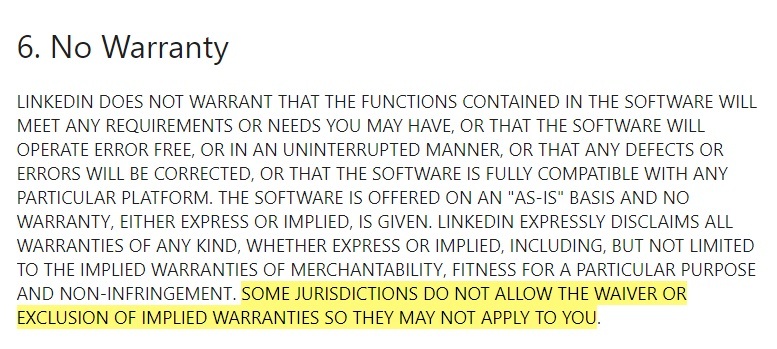
Limits on Use
You should make clear if you wish to impose any limitations on the way licensees use your software or tools. Including this limitation as part of an agreement will make it binding.
The limitations you apply could include the following:
- Only using the software in a personal, non-commercial context
- Not using the software to carry out illegal acts
- Not using the software in a way that breaches international sanctions
- Not using an online tool to cause harm to others, for example through distributing malware
- Not using an online tool to post abusive material
- Not using the software or online tool to handle adult material
You should also explain the consequences of breaching these limitations. This could include revoking the license, with or without compensation or refunds.
PaperCut lists barred actions, which each act as a limit on use:
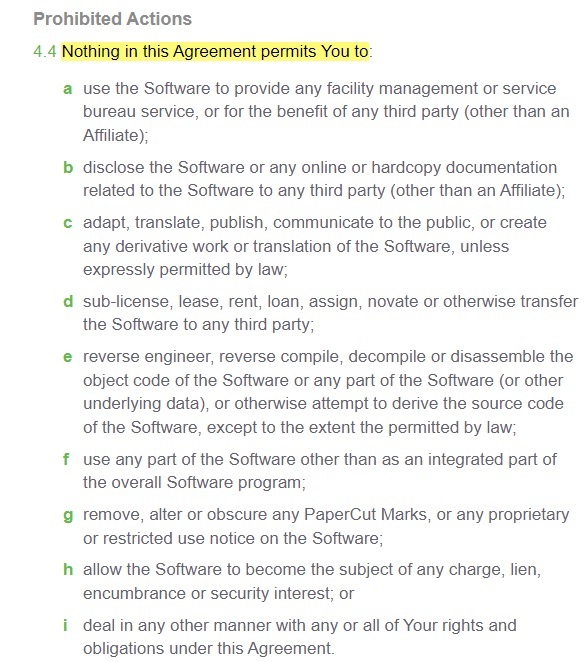
Termination
You should make clear how and when the license access can or will come to an end, such as by either party terminating the agreement as well as what consequences of this will be.
Possible ways could include the following:
- A fixed license period ends
- A subscription period ends and the user chooses not to renew or fails to make a renewal payment
- The license runs indefinitely but both you and the user have the right to end the agreement unilaterally
- The license is intended to run permanently but you have the right to either withdraw the software or stop supporting it
- The user violates your terms and you remove access to the license
- The user decides to stop having access to your license and terminates the relationship
You also need to set out the practical implications of the license term ending.
This could include the following:
- Stating that the user will no longer have the legal right to use the software or tool
- Explaining what actions you will take, for example remotely blocking the software from operating
- Explaining if the user must take any action such as uninstalling software or returning or destroying any physical media
- Explaining what will happen to files or anything else the user created with the tool, whether on your system or that of the user
- Setting out any grace period the user will have to download any files they have created before you remove them from your system
Here's how Dell sets out the ways the license can terminate and the consequences:

Once you have your clause drafted, and the rest of your Terms agreement around it, check out our guides on how to display your legal agreements and how to get agreement to them.
Summary
Let's recap what you need to know about license clauses:
- A license gives permission for somebody to use your software or service. It can apply regardless of whether or how somebody pays you.
- License terms can appear in several documents including an End User License Agreement, Terms and Conditions agreement or a Terms of Use.
- License terms aim to cover what you provide, what it costs, and rules for using it.
- Detail what the license covers, including the number of users, any time limits, commercial use, and transferring the license.
- Detail any costs including renewals and price changes.
- Set out how the license does or does not affect intellectual property rights on either side.
- Consider limiting liability or disclaiming warranties.
- Detail any limits on use (including banned activity) and the consequences of breaking these rules.
- Set out how the license can end, including by a time limit, a voluntary termination, or as a consequence of breaking rules.
